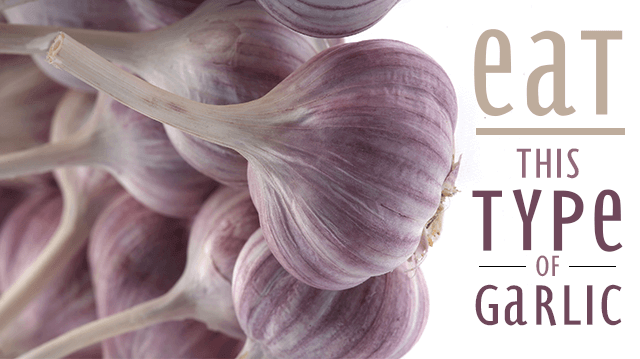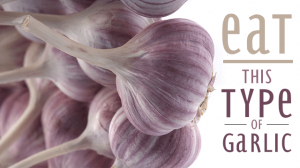
Few sauces, soups, or salsas (to name just a few dishes) would be complete without the delicious taste of garlic. Garlic is a member of the lily family, and its use dates back thousands of years. It is thought to have been first cultivated and celebrated by the Ancient Egyptians.
Not only is it yummy, this ancient superfood is incredibly healthy. It contains vitamins B1 and B6, as well as vitamin C, and the minerals calcium, copper, manganese, phosphorus, and selenium.
On top of that, garlic has been shown by a body of research to combat bacteria, viruses, yeast, and more. These uses of garlic date back throughout history. In fact, there is documentation from medieval times that garlic was used in concoctions to help ward off disease.
Modern science underscores the disease-fighting traditional uses of garlic. According to a supplemental portion of the 2011 The American Biology Teacher, by Maria João Fonseca and Fernando Tavares:
“Garlic (Allium sativum L.) is widely used for its culinary and pharmacological properties, which include antimicrobial traits. Garlic extracts are known to inhibit the growth of fungi, protozoa, viruses, and numerous bacteria, namely Salmonella spp., Staphylococcus aureus, and Escherichia coli…”
Fonseca and Tavares continue:
“Garlic’s antimicrobial activity is mainly ascribed to allicin, a bioactive compound present in injured garlic cloves… Allicin is considered a promising substitute or co-adjuvant for commercial antibiotics.”
Allicin, the biologically active component in garlic, is primarily responsible for delivering, among others, its antibacterial, antimicrobial, and antioxidant properties. The more research that is performed on garlic, the more pathogen-fighting power is found. The following is a look at some of these discoveries.
New study: garlic and urinary tract infections
A new study, just recently published in the Pertanika Journal of Tropical Agricultural Science, has linked garlic to combatting urinary tract infections (UTI). This is highly significant, as 150 million people across the globe are diagnosed with a UTI each year, and many of these infections are growing increasingly resistant to antibiotics.
For their study, researchers isolated 166 bacterial strains from human urine, and found that 56 percent of them displayed a “high degree of resistance to antibiotics.” On the other hand, when the strains were exposed to a crude garlic extract, 82 percent of the bacteria were found to be “susceptible.”
The research team stated, “To conclude, there is evidence that garlic has potential in the treatment of UTI and maybe other microbial infections.”
On these results, the study authors also wrote:
“Aqueous garlic extract (AGE) was found to possess effective anti-bacterial activity against multidrug resistant clinical pathogens and may be tested further as a natural dietary component to manage drug resistance bacteraemia. Therefore, alternate medicine practices with natural plant extract including garlic may be of great importance in combating public health challenges like UTI.”
Other exciting garlic research
A 2011 study published in the African Journal of Biotechnology surveyed the antibacterial properties of garlic in order to determine the efficacy of its use in traditional Ethiopian remedies. The researchers used extracts of both raw (room temperature) and heated garlic against 30 isolates of Staphylococcus aureus bacteria. Based on their results, the researchers concluded:
“Ethiopian garlic is used in traditional medicine for infectious disease and some other cases. The present study tested the aqueous extract of garlic in vitro for its antibacterial activity. The extract showed concentration dependent antibacterial activity against Staphylococcus aureus. The traditional use of Ethiopian garlic for infectious diseases and for controlling fever appears to be justified.”
This study also found that fresh, raw garlic was more effective against the bacteria than heated garlic.
A 2005 study published in the Archives of Oral Biology tested the effectiveness of garlic extract against various oral pathogens, which can lead to mouth diseases. The authors of the study wrote:
“Time-kill curves for Streptococcus mutans and P. gingivalis, showed that killing of the latter started almost immediately, whereas there was a delay before S. mutans was killed. The garlic extract also inhibited the trypsin-like and total protease activity of P. gingivalis by 92.7% and 94.88%, respectively. These data indicate that garlic extract inhibits the growth of oral pathogens and certain proteases and so may have therapeutic value, particularly for periodontitis.”
Furthermore, a 2004 study published in the Journal of Medicinal Food tested the effects of garlic extract against a number of resistant pathogens. In description of their study, the authors wrote:
“The antimicrobial effects of aqueous garlic extract (AGE) against 133 multidrug-resistant gram-positive and gram-negative bacterial isolates, including Staphylococcus aureus, Staphylococcus epidermidis, Streptococcus pneumoniae, Streptococcus pyogenes, Haemophilus influenzae, Salmonella typhi, Pseudomonas aeruginosa, Escherichia coli, Shigella spp., and Proteus spp., and against 10 Candida spp. were studied.”
On their results, the authors concluded:
“Analysis revealed the antimicrobial efficacy of AGE to be dose and time dependent, producing five distinct time–kill profiles among the isolates tested. The results of this study support the use of garlic in health products and herbal remedies in Nigeria.”
A few other noteworthy benefits of garlic
- It helps to reduce system-wide inflammation, which can help prevent a wide range of chronic illnesses.
- It may help to lower blood pressure, which is crucial to heart health, and to the prevention of heart attack and stroke.
- When made part of a healthy diet, along with exercise, garlic may help you to lose weight by regulating the formation of fat cells in the body.
- Due to its blood-pressure lowering potential, its antioxidant content, and the presence of vitamin B6 (among other key factors), garlic may help lower your risk of developing heart disease.
- It may improve the body’s metabolism of iron.
- A high intake of garlic may help to prevent certain types of cancers. Even moderate garlic intake has been shown by some research to help prevent some cancers from forming.
- Garlic may help to ward off a number of seasonal illnesses, including colds and flus, and may also help you to recover more quickly if you do catch a bug.
- It may help to prevent foodborne illnesses.
- It may help prevent yeast infections.
 How to maximize the potency of your garlic
How to maximize the potency of your garlic
While eating garlic in any form is a wonderfully healthy choice, some forms are more potent than others. Research suggests that the maximum allicin content is formed and retained in garlic when it is raw, has been chopped and crushed, and allowed to sit for several minutes.
Enjoy your raw, crushed garlic in this form by adding it to dips, salsas, and spreads. It is also great in salads with some dark, leafy greens and some fresh herbs. Or you can take it as-is, coated in some Manuka honey for sweetness and additional health benefits.
Of course, cooked garlic is not to be underestimated either — so don’t forget the fresh garlic when preparing sauces, roasts, sautées, and more! It is important to note, however, that if you do have a health condition, a conversation with a health professional you trust couldn’t hurt before eating garlic in greater quantities — just to be safe.
All in all, in the face of antibiotic resistance, this ancient superfood has a fighting chance to combat what ails us. We look forward to more research revealing the amazing effects that this little bulb can truly have on our health.
What’s your favorite way to eat garlic?
—Tanya Rakhmilvich
Tanya is a writer at The Alternative Daily with a passion for meditation, music, poetry, martial arts, and overall creative and active living. She has a special interest in exploring traditional Eastern remedies and superfoods from around the globe. Currently, she and her son live in Wisconsin, where they enjoy spending time immersed in nature.
Sources:
http://www.jstor.org/stable/10.1525/abt.2011.73.6.7?seq=1#page_scan_tab_contents
http://www.pertanika.upm.edu.my/Pertanika%20PAPERS/JTAS%20Vol.%2038%20(2)%20May.%202015/09%20Page%20271-278%20(JTAS%200616-2014).pdf
http://www.ajol.info/index.php/ajb/article/view/92369/81822
http://www.sciencedirect.com/science/article/pii/S0003996905000038
http://online.liebertpub.com/doi/abs/10.1089/jmf.2004.7.327
http://www.whfoods.com/genpage.php/genpage.php?tname=foodspice&dbid=60

